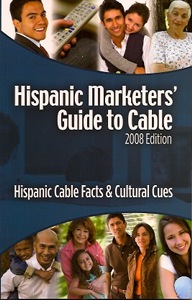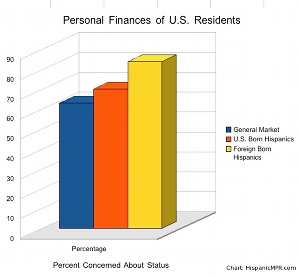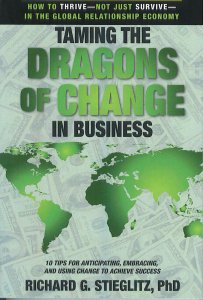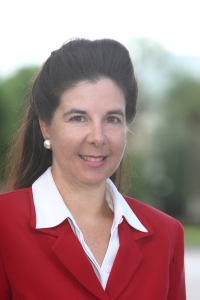Posted by Elena del Valle on January 26, 2009

Shira Simmonds, president and co-founder, Ping Mobile
Photos: Ping Mobile, impreMedia
Ping Mobile and impreMedia recently announced a partnership designed to offer mobile advertising and marketing to advertisers via Ping Mobile’s PingRewards platform. According to an impreMedia press release, the company aspires to be the leading U.S. mobile coupon site in Spanish. It is offering Hispanics a series of sweepstakes through print publications and online portals.
The company will offer Spanish speakers discounts through a portal, impreRewards, which is free for users. Its executives hope Latinos will be particularly receptive to marketing offers due to the current economic climate. The idea is to motivate consumers to accept the offers and information directly to their mobile phones by inviting them to carry the coupon content and redemption information on-the-go or in a viral format.
“This partnership represents a tremendous opportunity for advertisers interested in reaching the Hispanic consumer and we are excited to partner with impreMedia, given their unparalleled Hispanic audience in both online and print. Because of the current economic climate, consumers are turning to mobile couponing and it’s these consumers who will benefit from the impreRewards portal,” said Shira Simmonds, president and co-founder of Ping Mobile.
“Best in Class Hispanic Strategies” audio recording


Presenters Carlos Santiago and Derene Allen
-
Find out what makes 25 percent of the top 500 Hispanic market advertisers out perform the remaining companies
-
Discover what questions to ask, steps to take to be a Best in Class company
Click here for more about “Best in Class Hispanic Strategies” audio recording
ImpreMedia plans to provide users access through a keyword and short code to text in to receive individual coupons and encourage platform sign-up. Through their mobile phones, users should be able to text in a short code to receive their coupon and be able to double opt-in into the platform.
ImpreMedia is targeting Spanish Preferred Hispanics 18 to 44 with a household income over $40,000 via its 14 print publications in 17 Hispanic markets and 11 states: Arizona, California, Connecticut, Florida, Illinois, Massachusetts, New Jersey, New Mexico, New York, Pennsylvania and Texas.They plan to measure results and track coupon redemption by looking the exposure of print and online advertising along with opt-in and double opt-in metrics.
They expect to offer advertisers low cost introductory packages up to a specific message count (until messages are served) with the ability to control their message through the promotional period. They are also planning to offer tie-in to SMS offers (text keyword and code) to other ongoing promotional materials that the advertiser has, such as print receipts, online banners, TV or radio spots.

Arturo Duran, chief executive officer, impreMedia Digital
“Given the heavy mobile usage among Hispanic consumers, impreRewards is the perfect solution for any advertiser looking to target the Hispanic market,” said Arturo Duran, chief executive officer of impreMedia Digital. “The solid technology behind Ping’s platform and the ease of use from both the advertisers’ and consumers’ viewpoint, will allow our users to feel comfortable using this exciting, new and innovative marketing tool in their preferred language. Using impreRewards brands nationwide will be able to drive traffic directly to the point of sale within minutes.”
ImpreRewards, built on the same platform and relying on identical back-end technology as PingRewards, promises advertisers full control over campaign details including the content and timetable of each promotion.
ImpreRewards allows users to opt-out anytime by replying with the keyword “Stop.” The company promises that it will keep all consumer information secure. Ping Mobile boasts a coupon campaigns redemption rate of 56 percent on average. Executives at Ping believe high conversion rates are due to the method of SMS distribution they use designed to facilitate that the right messages be being sent to the right consumers. Current advertisers include Footlocker, ESPN Shop, 1-800 Flowers.com, Ice.com, Mikasa, Diamonds International, and World of Watches.
“WorldofWatches.com is thrilled to be a part of this exciting new venture between impreMedia and Ping Mobile. We anticipate the success of mobile couponing to be of great value to us and look forward to offering customers amazing offers on over 3,500 name brand watches, straight to their mobile phones,” said Izac Ben-Shmuel, chief executive officer of the SWI Group.
ImpreMedia is a leading publisher of Spanish language newspapers in the country. The company owns publications in 17 cities and has 26 online and print properties targeting the United States Hispanic population.
Ping Mobile is a full-service mobile agency, that offers a range of mobile marketing, offers, promotions and content services, with a specialization in mobile offers and promotions. The company focuses on consumers, consultancy, reporting, data analysis and client services packages. Ping Mobile is headquartered in Englewood Cliffs, New Jersey and has offices in Los Angeles, California and Tel Aviv, Israel. Ping is comprised of three wholly owned and fully-integrated units: Israel-based Ping Mobile Ltd. (formerly Regisoft Ltd.); Pop Solutions LLC, a Los Angeles-based mobile marketing company; and Ping Mobile, a New Jersey-based mobile marketing company.
“Beyond the 30 Second Spot” audio recording
Listen to a 105-minute discussion




Panelists Ivan Cevallos, Hunter Heller, Kitty Kolding and Cynthia Nelson
Our panel of national experts discuss
• Challenges of measuring the impact of the 30-second ad spot
• Innovative tools are useful to reach Latinos
• Changes in marketing to Hispanics
• On which market segment are the changes most relevant
• Effects of technology and time shift on consumer behavior
• Role of multi-screens
• Getting started
• Tips for marketing professionals
Click here for information on Beyond the 30 Second Spot
Posted by Elena del Valle on January 23, 2009

In 2003, the Cabletelevision Advertising Bureau (CAB) published a book about the United States Latino market to drive a heightened understanding of that growing and desirable market among potential advertisers. It was the organization’s first diversity publication. A second edition of that book would be published before, in 2007, the New York based organization published Race Relevance and Revenue, a 150-page book about the African-American marketplace. Discussions are in the works for a similar publication about Asian markets in the United States.
Late in 2008, the Bureau published Hispanic Marketers’ Guide to Cable 2008 Edition Hispanic Cable Facts and Cultural Cues ($49.95) to provide an updated resource for advertisers and their agencies. This third edition of the book was possible with a budget of $50,000 and the help of 12 contributors. It was designed to assist marketers to reach out to diverse Hispanic cable viewers, especially Spanish speakers who, according to the book, are particularly well represented by cable brands.
“We expect this to be the must-have guide for this year,” said Cynthia Perkins-Roberts, vice president of Multicultural Marketing and Business Development of the Cabletelevision Advertising Bureau. “We decided to take a different approach. It’s a multidimensional market. The strength of cable is that it reaches all the (Hispanic) segments. The book includes cultural cues and viewing information divided by segments of the population. This makes the book unique and mirrors the true industry.”
The publishers promise an explanation of the role of cable television in marketing to Latinos; why they believe cable is one of the fastest growing television options; information about the options available to reach Hispanics; details about the options cable offers Latino viewers; information on the major Hispanic market segments; insights on how marketers can connect with market sub groups; suggestions on how to approach Latino consumers; information on acculturation; insights on media habits and how they vary by generation; and information about English dominant Hispanics.
The organization printed 5,000 copies of the book and has distributed 1,500 to date. The book is divided into two halves: Hispanic TV Facts and Cultural Cues. The first half, relying on A Business Rationale, Geographic Targeting and Hispanic-Targeted Programming Options discussions, makes a case for cable as an ideal advertising vehicle to reach Latino viewers. The Business Rationale is divided into Choice, Growth, A Proven Entity, Prime Consumer Targets, Brands that Build Brands, Versatility and Consistency and Extended Reach.
The Cultural Cues half includes: an overview of the Hispanic population, Hispanic Men, Hispanic Women, Hispanic Youth, Acculturation, English Dominant and Hispanic Generations. Market information was provided by Cheskin Added Value, Experian, Felipe Korzenny, Ph.D., Franco Research Group, Latin Force, Milward Brown, The Nielsen Company, Gonzalo Perez, Terry Soto, Synovate and TNS. Some of the contributors submitted content on a pro bono basis.
Founded in 1980, the Cabletelevision Advertising Bureau is a cable television advertising advocacy group dedicated to providing advertisers media insights. The organization includes a division dedicated to diversity markets that provides advertisers information on Asian, Hispanic and African-American markets in the United States.

Click here to buy a copy of Hispanic Marketers’ Guide to Cable
Comments:
Filed Under: Books
Posted by Elena del Valle on January 21, 2009
By Elena del Valle, MBA
Principal, LNA World Communications
In the past months I have witnessed the disappearance of two well stocked neighborhood optical stores and a thriving mechanic shop nearly 20 years in business. One day they were there and the next they were gone. Many people may think that in these days of economic hardship it’s understandable for businesses to fail.
I mention the closings here to make a point about relationships. I did business with these companies. I had my eyes examined and bought glasses at the optical stores and my car was serviced at the shop. More importantly for this discussion, I knew the owners, managers and staff that worked at these places. We looked each other in the eye, we greeted warmly when we saw each other, I asked about their families and gave them my business on a regular basis for months or years.
After they went out of business I only heard from one of them. The former owner of the mechanic shop called to say he was working nearby at a national car repair franchise in case we should need to have our car serviced. The others disappeared without a word. There was no note on the door, no explanation, no farewell of any kind or an apology to their customers.
At the end of the day, we do business with people. They own businesses or are employed by the businesses we patronize. For many if not most of us these people and the way they treat us are the reason we become customers, return and remain loyal over time. It’s those relationships that help make a business grow and a brand thrive. At the same time, when the people at a store or business are unpleasant, behave unprofessionally or leave us dissatisfied we also remember their actions, sometimes for a long time. Their behavior can send us running toward another company, another brand.
Make your ads resonate with Hispanics
Listen to C&R’s Research Director Liria Barbosa in
“Hispanics’ Perspective on Advertising” audio recording

Liria Barbosa gives a presentation and participates in an extended Q&A discussion about
• Type of ads Latinos prefer
• Latino top media choices
• Percent of Latinos who tried products because of ads
• Percent of Latinos who purchased products because of ads
• What makes an ad “Hispanic”
• If ad language is important for bicultural Latinos
• What to keep in mind when targeting bicultural Latinos with ads
Click here for information on Hispanic Perspectives on Advertising
It’s a search for assurance that prompts many of us to rely on brands because we believe they provide high quality, stability and safety. We are confident that our favorite franchise store and name brand products are superior than the alternative. This is why we remain brand loyal until something happens to shake our loyalty. When times are lean and budgets are tight we remain attached to the brand in the hope that we are getting the best value for our money and time. Even if a broader search might reveal a less expensive alternative or better service we may opt for the known brand. As one commercial put it, “The best surprise is no surprise.” After all isn’t that the basis of brand loyalty?
This brings me back to relationships. A few days before the store closed and not knowing they were about to close, I spoke with Michael, the manager of the optical store. He was friendly and said he would call back to let me know when my glasses were ready for pick up. He never called. The next time I saw the inside of the store four days later there were workers removing the remnants of the inventory that had been sold to new owners. I will remember Michael less for all the times we spoke and he was nice and much more because I never recovered the glasses I had already paid for. I blame him and more importantly I am disappointed in the way he behaved. He provided poor good customer service, and needless to say, I lost my brand loyalty.
Negative experiences stay with us for a long time. I know someone who was mistreated by employees at Sears 22 years ago. She tore up her store credit car and has never purchased another Sears product again. My point is that in these times of hardship and economic uncertainty relationship building to create brand loyalty is more important than ever.
According to some researchers, Latinos are often brand loyal. As a market segment Hispanics may be more brand loyal than the average shopper, depending on the product or service. In exchange for their loyalty as customers they want to feel welcome. They seek superior service and are willing to pay more for a product or service if it is accompanied by good technical support and customer service.
If Latinos represent 40 percent of all new consumers, as researchers believe, it’s likely that many new consumers place a premium on relationships and customer service. This market group offers high potential for brand loyalty. Is your businesses prepared to cater to these highly desirable potential new customers? Are you willing and able to establish long term relationships in the hope of nurturing their brand loyalty?
Hispanic Marketing and Public Relations Understanding and Targeting America’s Largest Minority book

“A must resource for practitioners/professionals expecting to reach US Hispanics; also valuable for college programs in marketing, public relations and communications. Highly recommended.”
Choice magazine
Click here for information on the Hispanic Marketing & Public Relations book
Posted by Elena del Valle on January 20, 2009

Personal Finances of U.S. Residents – click on image to enlarge 
As a result of the economic recession, Latinos may be adjusting their habits and behaviors including spending less on dining out and holiday shopping, and helping family members or friends with a loan. About 3 percent of Latinos received a foreclosure notification in the last year and 10 percent of Latinos missed a mortgage payment or were unable to make a complete payment according to a recent survey of 1,540 Hispanic adults by the Pew Hispanic Center.
Sixty-two percent of respondent homeowners said there have been foreclosures in their neighborhood over the same time period; and just over one third of those survey (36 percent) said they worry about their own home going into foreclosure. The number of foreign-born Latino homeowners worried about losing their home to foreclosure was much higher, 53 percent.
Respondents also indicated they sent less money abroad to their family in the last year. Just over 70 percent of Hispanic immigrants said they sent less money to relatives last year than in 2007.
At the same time survey respondents expressed greater concern about finances than the general population in the United States. Three quarters of U.S.-born Latinos surveyed and 84 percent of foreign-born Latinos, indicated their personal finances were in either fair or poor shape at the time of the survey, compared with 63 percent of the general U.S. population who expressed similar concerns.
The results of the survey were released in a report written by Mark Hugo Lopez, associate director, Gretchen Livingston, senior researcher, and
Rakesh Kochhar, associate director for Research, Pew Hispanic Center. The Pew Hispanic Center, a nonpartisan research organization, is dedicated to improving public understanding of the Hispanic population in the United States and to chronicle Latinos’ growing impact on the nation. It does not take positions on policy issues.
Target Latinos effectively by anticipating changes in the market with
“Hispanic Projections with 2007-08 update” audio recording

Presenter Roger Selbert, Ph.D.
Find out
- About Latino buying power growth in the future
- How Latino market growth compares with other markets in the U.S.
- What drives the rise of Latino economic clout
- Who should target the Latino market
- What is the size of the Hispanic affluent market
- If the luxury Latino market is growing
Stay ahead of your competition with “Hispanic Projections”
Posted by Elena del Valle on January 19, 2009

Click on image to enlarge
Photos: Credit Solutions
According to “A Snapshot of the Subprime Market” published in 2007 by the Center for Responsible Lending, 40 percent of subprime loans nationwide in 2006 were issued to Latino households. At the same time, information from September 2008 from the National Association of Hispanic Real Estate Professionals, “A Warm Welcome: Despite barriers, Hispanic home ownership may be the fix for national housing crisis Carolina del Norte,” indicates that by 2012 40 percent of first-time home buyers nationwide may be Hispanic.
Keeping this in mind Credit Solutions, a Texas debt management company, recently launched a Spanish language version of its website to reach Spanish speaking Latinos in the United States. Except for the text of the sample Settlement Letters and the Success Stories audio all the content on the main website was adapted for the Spanish language pages.
“It goes back to the original reason I founded Credit Solutions: to give families suffering real hardships, like job loss, medical bills, or a death in the family, an alternative to bankruptcy and a chance to have someone on their side, working for them. Lots of people don’t realize that most credit counseling agencies actually represent the creditors. We represent the consumer and act a mediator between our clients and their creditors,” said Doug Van Arsdale, chief executive officer, Credit Solutions in response to the question of why the company decided to target Latinos at this time.

Doug Van Arsdale, CEO, Credit Solutions
Executives at Dallas-based Credit Solutions believe Hispanic families have been particularly hard-hit by the economic situation and a disproportionate number is struggling against foreclosure. This may not come as a surprise to lending industry professionals.
According to the 2006 Hispanic Homeowner Seminar at the U.S. Department of Housing and Urban Development, non-white Hispanic Americans were 39 percent less likely to own a home at that time. Seminar representatives concluded that Latino homeowners maintain higher total amounts of debt and are more likely to be victims of predatory lending practices.
Often lenders justify higher mortgage rates for minorities claiming the individuals from these cultural groups have shaky credit histories, making lending to them riskier than to mainstream borrowers. However, in 2006, representatives of the Center for Responsible Lending examined 50,000 subprime loans (described as the “most extensive study of its kind”) and determined African-Americans and Latinos were almost a third more likely to end up with a high-priced loan than non Hispanic white borrowers with comparable credit credentials.
According to Credit Solutions promotional materials, its Spanish-language site offers advice, tips and tools designed to empower clients to achieve a debt-free lifestyle. There is an overview of why company representatives believe debt settlement is preferable to a debt consolidation loan, credit counseling or declaring bankruptcy. There are also videos of client testimonials; and settlement letters from lending sources detailing instances of settled accounts, and the actual savings in each case.
Credit Solutions is a privately held, for-profit firm founded by Van Arsdale in 2003. The company has three offices in Dallas, Texas and offices in Tempe, Arizona and Costa Rica.The company employs 920 individuals of which 20 percent are Hispanic. About 10 percent of Credit Solutions staff leadership is Hispanic.
According to online sources, including ConsumerAffairs.com, CreditInfoCenter.com, and WBZTV.com, there have been many complaints against Credit Solutions and at least one class action lawsuit against Credit Solutions of America.
“Since I am not familiar with these complaints, I have referred them to our Executive Review Team so that they are addressed immediately and resolved. We have 90,000 active clients, and we are 100 percent committed to customer satisfaction. If, for any reason, these complaints have not yet been addressed, they soon will be resolved to the best of our ability,” a Credit Solutions representative said by email when invited to respond to the issue.
Make your ads resonate with Hispanics
Listen to C&R’s Research Director Liria Barbosa in
“Hispanics’ Perspective on Advertising” audio recording

Liria Barbosa gives a presentation and participates in an extended Q&A discussion about
• Type of ads Latinos prefer
• Latino top media choices
• Percent of Latinos who tried products because of ads
• Percent of Latinos who purchased products because of ads
• What makes an ad “Hispanic”
• If ad language is important for bicultural Latinos
• What to keep in mind when targeting bicultural Latinos with ads
Click here for information on Hispanic Perspectives on Advertising
Posted by Elena del Valle on January 16, 2009

Joaquin Garza host of “El Chulo de la Mañana”
Photo: Spanish Broadcasting System Inc.
Starting last week, Spanish Broadcasting System began airing a television version of its Los Angeles radio morning show “El Chulo de la Mañana” from 6 a.m. to 9 a.m. (ET), 9 a.m. to 12 p.m. (PT) through Mega TV and Direct TV Más, Channel 405. The show, which targets 18 to 35 year old listeners and viewers, combines jokes, skits, parodies, current events, interviews with listeners, live sport broadcasts, entertainment and news from correspondents.
The program is one of several under the heading of Radio on TV that Mega TV offers in both media formats. Other programs that air in both formats include “El Vacilón de New York” and “El circo de Puerto Rico.” “El Chulo de la Mañana” is hosted by Joaquin Garza, also known as “El Chulo.” On the show, Garza is assisted by Zacatecas, Mexico born Raul Bernal who is known on the air as “Doña Mela,” and Denise Garcia. “Doña Mela” is meant to resemble a typical Mexican grandmother with an old fashioned and conservative point of view. “She” often disagrees and argues with El Chulo. “Doña Mela” also disagrees with Garcia’s modern views on life.
Garza’s radio career spans 23 years. He has worked in radio in Los Angeles, San Jose, San Francisco, and Sacramento, California and Dallas and Austin, Texas. Garcia, born in Tamaulipas, Mexico, came to the United Stats when she was 15. She grew up in Alamo, Texas and graduated college with a bachelor’s degree in education.
“’El Chulo de la Mañana’ in Los Angeles will give Mega TV audiences a very funny, interactive morning show that covers topics that are part of everyday life: Work, family, relationships, infidelity, entertainment and community issues,” said Cynthia Hudson Fernandez, chief creative officer and executive vice president for Mega TV. “Garza’s show has been a great success in numerous radio markets, and we are confident that our TV audience will love ‘El Chulo de la Mañana‘ and connect with Garza’s unique style. ‘El Chulo de la Mañana’ is formatted to attract both local and national audiences, and has enjoyed tremendous acceptance, especially with the Mexican audience, which constitutes the largest segment of the U.S. Hispanic population.”
Born in Zapotlan El Grande, Jalisco, Mexico, Garza’s career began in 1985 at radio station KALI in Los Angeles, California. In 1992, he worked for Spanish Broadcast System at FM 98. By 1995, he was the lead in the show “El Chulo Y La Bola” at Z Spanish Network based in San Jose, California and his popularity continues.
Spanish Broadcasting System, Inc. is one of the largest publicly traded Hispanic-controlled media and entertainment companies in the United States. SBS owns and operates 20 radio stations located in Hispanic markets such as New York, Los Angeles, Miami, Chicago, San Francisco and Puerto Rico. The Company also owns and operates Mega TV in Miami.
Make your ads resonate with Hispanics
Listen to C&R’s Research Director Liria Barbosa in
“Hispanics’ Perspective on Advertising” audio recording

Liria Barbosa gives a presentation and participates in an extended Q&A discussion about
• Type of ads Latinos prefer
• Latino top media choices
• Percent of Latinos who tried products because of ads
• Percent of Latinos who purchased products because of ads
• What makes an ad “Hispanic”
• If ad language is important for bicultural Latinos
• What to keep in mind when targeting bicultural Latinos with ads
Click here for information on Hispanic Perspectives on Advertising
Posted by Elena del Valle on January 14, 2009
By Aldo Quevedo,
President, Dieste, Inc.

Aldo Quevedo, president, Dieste Dallas
Photo: Dieste
When the fit is right, a Hispanic agency can help brands grow their relationships with multicultural consumers for meaningful, powerful interactions that make sense and connect with consumers’ lives. But the wrong choice can put your efforts in question, since this savvy demographic is always on the watch for commitment and for brands that really speak and interact with them.
Click here to read the complete article
Hispanic Marketing and Public Relations Understanding and Targeting America’s Largest Minority book

“A must resource for practitioners/professionals expecting to reach US Hispanics; also valuable for college programs in marketing, public relations and communications. Highly recommended.”
Choice magazine
Click here for information on the Hispanic Marketing & Public Relations book
Posted by Elena del Valle on January 12, 2009

A scene from the Cat’s Meow music video
Photo, video: M80, Snapple
Last year Snapple released an Antioxidant Water “Bubble Wrap” commercial targeting young, indie rock music fans, students, men and women, including Latinos, based in major markets with a strong focus in the south, especially Florida. It was so popular that the company decided to follow up with a music video performed by the same indie rock band, The Bad Eliots, that recorded the commercial. Since the release of the band’s first music video, Cat’s Meow, late last year, the video has been featured in more than 50 websites. The song is available for free download and online purchase. Scroll down to watch the Cat’s Meow video.
Snapple spent $25,000 on the video which was filmed in early 2008 in New York City. It features James Rotondi, lead singer; Anthony Citrinite, drummer; Jonny Matias, singer and guitarist; and Paul Riario, guitarist. Tim Wilson was the director.
The Bad Eliots is a group of four New York City based musicians. Roto (also known as James Rotondi), singer and multi-instrumentalist. He has performed with the French band Air, Mike Patton’s Mr. Bungle and The Grassy Knoll, a jazz-hop band; and Ant Cee (also known as Anthony Citrinite), the band’s drummer. He was a founding member of The Smash-Up, who performed from 2004 to 2007 on Megadeth’s Gigantour, the Deftones’ Taste of Chaos tour, and the Warped Tour, from which Ant’s drum sticks were plucked to be placed on display in Cleveland’s Rock and Roll Hall of Fame.
Matias, the band’s bassist, is a producer and multi-instrumentalist who runs a studio in New Jersey. He is also a singer and guitarist with The Crash Moderns, as well as producer and engineer for the New York City Power Pop band. Riario is the maestro behind The Monster, a New York metropolitan area live cover band.
Snapple is owned by the Dr Pepper Snapple Group, one of the largest beverage companies in the Americas. The company makes and distributes more than 50 brands of carbonated soft drinks, juices, ready to drink teas, and mixers across the United States, Canada, Mexico and the Caribbean including Dr Pepper, Snapple, 7UP, Mott’s, A&W, Sunkist Soda, Canada Dry, Hawaiian Punch, Schweppes, Peñafiel, Squirt, Clamato, Mr & Mrs T Mixers, Rose’s, and Yoo-hoo.
Find out what multicultural kids across America think
Listen to Michele Valdovinos, SVP, Phoenix Multicultural in
“Marketing to Multicultural Kids” audio recording

Michele Valdovinos gives a presentation and participates in an extended Q&A discussion about multicultural children based on a Phoenix Multicultural and Nickelodeon study of 1,300 multicultural children in 16 United States markets.
Find out about
• The Phoenix Multicultural Kids Study
• Relationship between children and their context
• Issues relating to family, technology and media, diversity, buying power, relationships in household, self perception, values, acculturation, cultural heritage, frequency of media activity, income and spending, brand preferences, the American Dream
• How many billions of dollars buying power multicultural kids children have
• Children’s spending attitudes, habits by ethnicity
• How much money a year Hispanic kids have available to spend
• Types of products Hispanic kids buy
Click here for information on “Marketing to Multicultural Kids” audio recording
Posted by Elena del Valle on January 9, 2009
I
Dragons of Change in Business book cover
In Taming the Dragons of Change in Business 10 Tips for Anticipating, Embracing and Using Change to Achieve Success (Acuity Publishing, $19.95), Richard G. Stieglitz, Ph.D. explores ways for readers to take advantage of current market, employment, organizational and business shifts. The Maryland resident believes that individuals and companies who are prepared and ready may be able to take advantage of the opportunities that develop in the rapidly changing environment.
Stieglitz, who believes the most notable change is the increased importance of relationships in the business environment, addressed the book to leaders who want to transform their organizations. He divided the book into three sections: Beliefs The Foundation for Success; Relationships Building Blocks of Success; and Actions Only Actions Change Reality. He shared three tips in each of the first two and four tips in the third one.
The three tips in the first section are Abundance Be Abundant in Your Attitude; Opportunity Answer When It Knocks; and Investments Pay It Forward. The tips for the second section are: Communications Get Your Message Across Clearly; Diversity Embrace Diversity to Expand Creativity; and Collaboration Collaborate, Collaborate, Collaborate. The tips for the final section are: Purpose Use Purpose to Set Your Direction; Planning Plan to Achieve Your Goals; Innovation Reach the Top Through Innovation; and Execution Execute to Produce Results.
He dedicated the final eight pages of the book to what he considers are ten future changes: An increase in independent workers; increased customization; more direct communications thanks to technological advances; pressure for high skilled workers to adapt to business demands; heightened importance of creativity; more social change than ever; shifting world market that will drive economic relationships; closer relationships resulting from global markets; a shrinking business environment pressures leaders to sustain healthy relationships; and greater uncertainty.
A nuclear engineer by training, Stieglitz has a 35-year career track. He served 10 years in the United States Navy and then pursued a career in the private sector where he worked for software and aerospace firms. He also authored Taming the Dragons of Change 10 Tips for Achieving Happiness and Success When Everything Around You is Changing.

Click here to buy Taming the Dragons of Change In Business
Comments:
Filed Under: Books
Posted by Elena del Valle on January 7, 2009
By Elena del Valle, MBA
Principal, LNA World Communications

Elena del Valle, MBA
In these days of economic shrinkage, results, seemingly, are what everyone is looking for as consumers and companies scrutinize expenses and ROI (return on investment). At the same time that the financial downturn is impacting millions of Americans and people and businesses in many countries, once the shock of the loss passes it is possible to see the many efficient companies, strategies, business and technology mavericks and emerging market opportunities that remain.
Click here to read the complete article
A related article was published today on Mplanet blog, part of the American Marketing Association
Hispanic Marketing and Public Relations Understanding and Targeting America’s Largest Minority book

“A must resource for practitioners/professionals expecting to reach US Hispanics; also valuable for college programs in marketing, public relations and communications. Highly recommended.”
Choice magazine
Click here for information on the Hispanic Marketing & Public Relations book



































